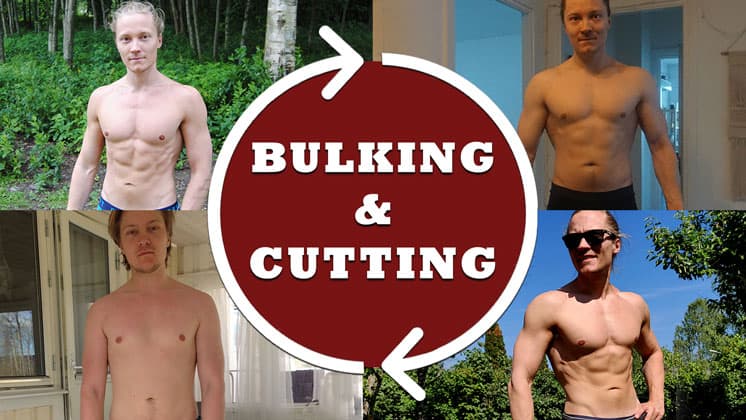
If your goal is to get ripped, then you’ve probably heard about bulking and cutting cycles, right?
If you’ve been training for a while, I’m sure you’ve already done a few bulks and cuts already?
Or if you’re fresh to the lifting game, maybe you’re looking to do them for the very first time?
No matter where you currently are, in today’s post (and video) I’m going to explain why doing bulking and cutting cycles is the quickest and most effective way to build a ripped physique. And also show you how to set them up so that you can get the best results possible.
So, buckle up, you’re heading to Rippedville.
SARMs Cutting Stack
- Cuts down excess fat
- Enhances metabolism
- Fast and effective results
- Fuels fat burning
Prime Shred
- Activates Body’s Fat-Burning Hormones
- Fast, whole body fat burning
- Vegetarian & vegan friendly
Table of Contents
What’s a Ripped Physique?
Before looking at the power of bulking and cutting cycles let’s first define what a ripped physique is.
There are two things that characterize a ripped physique:
- A low body fat percentage
- Good muscular development
When you put these two together you get that ripped looking physique – with a slim waist, thick shoulders and upper back, masculine chest, well developed arms and powerful looking legs.
Just like Mr. Skarsgård in Tarzan:

One without the other doesn’t cut it. If you’re lean without much muscle, you’ll just look skinny and small. If you’re muscular but have it all covered up with fat, you’ll look big, but won’t turn any heads around.
So, how do you accomplish both of these goals? Or more importantly, what’s the quickest way of doing so?
Well, by doing bulking and cutting cycles.
What Are Bulking And Cutting?
In short, bulking and cutting are just “bronyms” (synonyms created by the bro’s) for building muscle and losing fat. Here are the basic definition of the words:
- Bulking: Is done over a period of time with the goal to gain weight, add muscle and/or increase strength. Typically the word bulking is associated with being in a caloric surplus which is required to maximize any, or a combination, of these goals.
- Cutting: Is done over a period of time with the goal to lose body fat. For fat loss to occur a caloric deficit must be present.
The fact that you must be in a caloric surplus to maximize muscle growth/strength, and in a caloric deficit to lose body fat, is why bulking and cutting cycles is the quickest way to get ripped.
But, now you might ask:
Why not gain muscle and lose fat simultaneously?
Well, even though “body recomposition” as it’s called will happen if you train hard for multiple years and just eat enough to maintain your weight, it’s still a very slow process that is only effective during these four circumstances:
- In beginners – People that are new to training can build muscle and lose fat simultaneously, because the stimulus to training is so fresh.
- In overweight and obese – These individuals have a large surplus of stored energy on the body which effectively can be used as energy by the muscle building process.
- In de-trained – People that have been laying of their training for a while and become de-trained. These individuals increased their number of myo-nuclei within the muscles during the training they previously did. This myo-nuclei stay in the muscle far longer than actual muscle tissue do, ready to return it to the previous condition ones the training continues. This is known as the bro-term “muscle memory”
- In steroid users – Individuals that take supraphysiological doses of androgens effectively ramp up their amounts of myo-nuclei within the muscles, and will experience the “muscle memory” effect that de-trained individuals do, while not being de-trained at all!
Assuming you want to stay natural, then the more training experience you gather, the leaner you get, and the less de-trained you become, the slower it’ll be to gain muscle and lose fat simultaneously.
And even if you currently fall under any of the four circumstances above, you will still see slower results than if you choose to focus on one of the goals at a time.
In fact, here’s a great illustration of the difference between choosing to do bulking and cutting cycles as opposed to body recomposition:
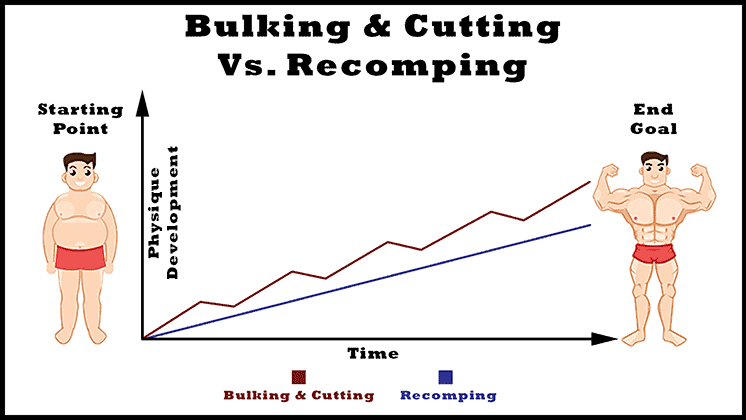
So, when it comes to getting a ripped physique sooner rather than later, the best thing would be to use:
Bulking And Cutting Cycles
The best way to get a ripped physique as quickly as possible is by optimizing muscle growth and fat loss separately. Where your muscle mass increases over time, while your fat mass goes up in the short-term, but stays the same or go down in the long-term, just like this:
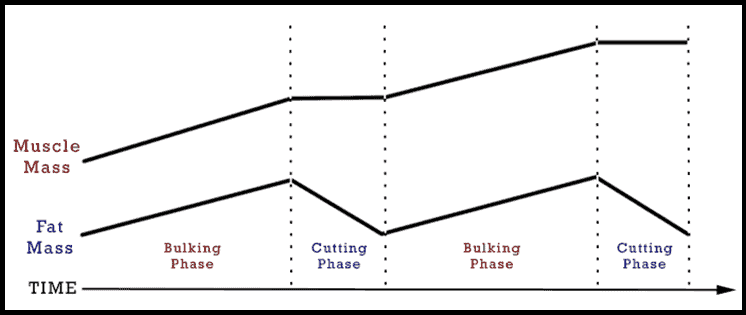
So, now you might wonder:
Why is bulking and cutting cycles the most optimal way to a ripped physique? Well, because of the following:
Bulking and Cutting Cycles Allow You to Stay Lean While Maximizing Muscle Growth
Trying to maximize muscle growth is somewhat of a paradoxical task. Here’s what I mean by that:
First of all, you need to be in a caloric surplus that’s bigger than the surplus just needed to build the muscle in theory. In other words, if your goal is to maximize growth, a bit of body fat storage will simply come with the territory.
This seems to be because of nutrient partitioning, where some of the additional calories you eat throughout a day when bulking, will go towards fat storage and not muscle growth. So, a caloric surplus that’s bigger than what’s just required to build muscle theoretically, must be present in order to maximize muscle protein synthesis.
And secondly, which is where the paradox comes in, is that you must also stay relatively lean to maximize growth.
By staying lean you’ll have a better hormonal environment for growth in the body, with better insulin sensitivity and testosterone-cortisol ratios etc.
So, as you can see, a cutting phase will be necessary eventually after you’ve been bulking for a while. Because if you’re not taking the cutting phase, you will, to put it in Mike Israetel terms:

“Become desensitized to growth following a prolonged period of overfeeding. Where you’ll only piss away time, by storing mostly fat if you continue to bulk once you reach a higher body fat percentage.”
Now, this also briefly answers the question:
Should You Bulk or Cut First?
I’ve written a whole article on this topic here. But in short, you should definitely start out lean, which for most people means cutting first. There are three main reasons for this, and they are:
- You’ll look great while building your physique
- You’ll put on more muscle and less fat during your bulk
- Bulking in a lean stage is healthier
Let’s briefly cover these one by one:
1. You’ll look great while building your physique
If you’re fairly new to working out, you probably need to add 30-40 lbs (15-20 kg) of lean muscle to your frame in order to achieve the physique you want. And this is something that won’t happen overnight.
But, time is rarely the problem.
The biggest problem is the unnecessary amount of fat people typically store by starting out with a bulk before they’re lean enough to do so.
Let’s say for example that you’re completely new to training and choose to start a bulk at 15 % body fat. Over the course of 6 months, you add 10 lbs (4.5 kg) of muscle to your frame while simultaneously reaching 25 % body fat.
Well done! Putting on 10 lbs of muscle in 6 months is great and entirely possible.
But ask yourself truthfully, will you be happy with how you look when you start to reach 20-25 % body fat?

As you can see in the picture, it’s at the point of 15 % body fat that any hint of aesthetics really starts fading away. You’ll start to lose out on the definition of your muscle, you’ll look puffy, have a more swollen face and you won’t fit too well in clothes.
Now, if instead you focus on getting lean first, you can start bulking at 10% body fat, and keep your bulks between 10-15 % body fat. By doing this you won’t think as much about the time required to build muscle mainly because your time in both the gym and in general will be a lot more enjoyable.
You can rock your favorite tank top and flex your “bulking pumps” in the gym with leanness to also show for it! Personally I’d much rather look like this when bulking:

This is especially true since staying lean also provides you with the following benefits when bulking:
2. You’ll put on more muscle and less fat during your bulk
As I mentioned earlier, by staying lean when bulking your calorie surplus will result in more muscle mass and less body fat. Research shows that you’ll achieve something that’s called better nutrient partitioning when you’re lean.
This means that, if you keep your bulking phases within a fairly lean range, between 8-15 % body fat for males and 17-25 % for women, more of your caloric surplus will go towards muscle growth rather than fat storage.
The reason why your nutrient partitioning improves is because your body maintains a better hormonal balance when you’re lean. With better insulin sensitivity and testosterone-cortisol ratios etc. as I mentioned above.
3. Bulking in a lean stage is healthier for the body
Having a better hormonal environment in the body is not only associated with improved muscle growth, it’s also associated with improved health.
Truth is that bulking in and of itself is a bit unhealthy even within the “healthy range” of 8-15% body fat. But, it’s A LOT unhealthier to bulk above these ranges.
Furthermore, science shows that the fatter you’ve once gotten, the harder you will have to maintain a low body fat percentage after your future cuts, or when the time comes to stay lean for good.
That sounds terrible!
The mistake of not starting out lean is one of the biggest reasons a lot of people struggle getting and keeping a lean physique in the long-term.
So, with these three reasons in mind, here’s a quick outline of the most optimal bulking and cutting strategy:
Bulking And Cutting Cycles 101 – The Ultimate Body Recomposition Strategy
1. Get lean first – This is the foundation, which is very important. Having around 8-10 % body fat for men and 15-17 % for women is the best place to start at, both when it comes to maximizing muscle growth, and also for staying healthy.
2. Once you’re lean – That’s when you start lean-bulking using a caloric surplus that’s as big as your rate of maximum muscular potential until you’ve reached 15 % body fat for men and 25 % body fat for women. This upper point is typically when you’ve lost definition of all your abs.
3. When you reach 15 % respective 25 % – Start cutting until you’re back down to 8-10 % respective 15-17 % again.
4. Repeat – Until you’re happy with your physique or reached your genetic potential.
Advanced trainees should just use a slight caloric surplus on training days. They’re close to their genetic potential, and can’t build muscle at a pace that’s worth going on a bulk anymore.
*This system is outlined in detail in the guide: How to Build an Aesthetic Physique
As you can see, when doing bulking and cutting cycles you start bulking when you’re around 8-10% body fat for males and 15-17% for females, and stop bulking when you’re around 15% body fat for males and 25% for females. I’ve written more about when to stop and start bulking/cutting in this post.
How Long Should Your Bulking And Cutting Cycles Be?
Well, here’s the deal:
There’s no definitive answer to this question.
Since the length of your bulking and cutting cycles should ideally be determined by your body fat percentage and not by fixed time stamps this mostly depends on your training experience.
Training Experience Determine The Length Of The Bulking And Cutting Cycles
If you want to maximize muscle growth, the less training experience you have, the quicker you can gain muscle during your bulking phases, and vice versa.
This means that with less training experience your bulking and cutting cycles will be shorter, simply because when you gain muscle quicker, you’ll also add fat quicker. While on the other end, with more training experience the opposite will be true.
Now, I’m sure some of you will still wonder:
But, Niklas… How long will they be? Please give me a time stamp to work with!
Well, fine, here’s an example:
Let’s say that you’re stepping into the novice/intermediate realm, you’ve been training consistently and appropriately for 1 year. According to Lyle McDonald’s maximum muscular potential table you can at the upcoming year gain around 1 pound of muscle per month:
| Years of Proper Training | Potential Rate of Muscle Gain Per Year |
|---|---|
| 1
2 3 4+ |
20-25 pounds (2 pounds per month)
10-12 pounds (1 pound per month) 5-6 pounds (0.5 pound per month) 2-3 pounds (not worth calculating) |
Since it theoretically requires a 2500 calorie surplus to gain 1 pound of muscle per month, you would need to eat roughly 83 calories above maintenance each day. But, to ensure that you’re gaining muscle at the maximum rate, by taking nutrient partitioning into consideration, I like to double this number.
By doing this you’ll end up gaining roughly 2 pounds of weight per month, where 1 pound is muscle and 1 pound is fat.
So, how long will your bulk last then?
Well, let’s assume you start out lean at around 10% body fat (which you should), and you weigh 165 lbs.
To save you the math, it would take you 9 months to go from 10 % body fat to 15 % body fat by gaining 1 pound of muscle and 1 pound of fat per month:
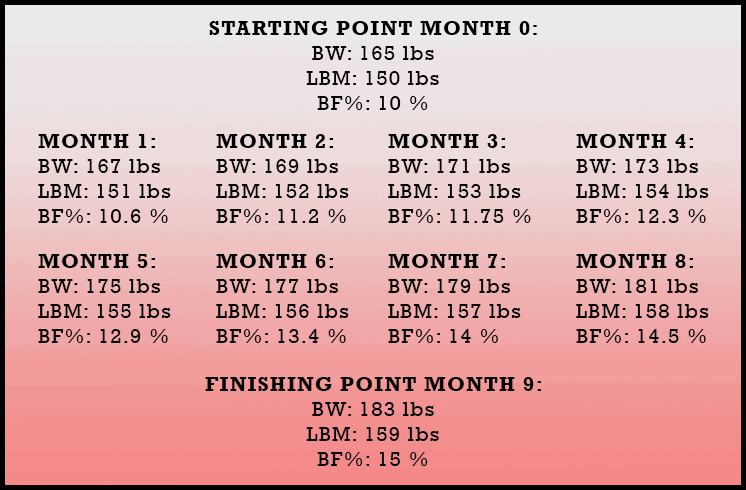
During this time you’ll add a total of 14 lbs of weight to your frame, where 7 lbs will be muscle mass.
So, how long will your cut last then?
To get back down to 10% body fat, without muscle loss, you shouldn’t lose weight faster than ~1 pound per week. You can read more about setting up an optimal calorie deficit for fat loss here.
But, with 1 pound of fat loss per week in mind, here’s some quick math:
- 183 pounds (bw at 15 % body fat) x 0.05 (5 % body fat you’re looking to lose) = 9.15 pounds of fat
You’ll have to lose roughly 9 pounds of fat to get back down to 10 % body fat, which should take you ~9 weeks if you lose 1 pound per week.
Note: These numbers are estimates only, there are so many variables that will skew these numbers in one way or the other. But, in a totally neurotic and theoretical fashion, for a novice stepping into the second year of training, 9 month bulking respective 9 week cutting is approximately what the length of the cycles will end up be.
Now, when it comes to the total time it takes you to get a ripped physique obviously depends on where you currently are and the level of development you want. If you’re interested in knowing roughly how long your overall journey will be, check out this post next!
How to Transition From Cutting to Bulking?
This is the next natural question people ask after they learn the benefits of using bulking and cutting cycles and starting out with a lean physique. And in short the way you transition form cutting to bulking is this:
- Have a big initial increase in calorie intake to quickly eliminate the calorie deficit
- Once you have found your maintenance, stay there for 2-3 weeks and try to eat as much as you can without gaining weight
- Then move from maintenance into a lean bulk, this is done by eating 5-10% more calories. When lean bulking you want to eat as much as you can without gaining fat.
By doing it this way you’ll ensure that your body gets prepared for the calorie surplus by resetting potential metabolic adaptations made by your body during your cutting phase.
If you want to read more about this topic, make sure you read this article next.
How to Transition From Bulking to Cutting?
So, what about the other way around? Well, this is often an easier process than transitioning from cutting to bulking.
When transitioning from a bulk to a cut I recommend that you take one week at a smaller calorie deficit, around 200 below your maintenance calories.
Doing this isn’t necessary, but it will help you avoid the “shock effect” often caused by jumping straight to a 500 deficit per day, where you’ll feel like shit for a couple of days before your body gets used to being in a deficit.
Last Advice: Stay Consistent!
Building a ripped physique takes time, especially if you want a lot of muscle mass naturally.
What it all comes down to is committing to a training and dieting system that you can see yourself using for a long time. In fact, I’m bulking and cutting even when I’m traveling.
I can’t stress enough how important it is to make the commitment. This is what I did a few years back, as I decided to stop being skinny fat and totally transform my life. And I know that you can do it to, if you just get started!
And luckily, during the first 3-4 years of serious training, with correctly set up bulking and cutting cycles, improvements to your physique happens very quickly!
So, find a system and get started today. You’ll definitively thank yourself in a year!
Conclusion
Building a ripped physique isn’t hard.
It comes down to setting up a system that allows you to stay lean while putting on as much muscle as possible. And most importantly, a system that you can be consistent with.
Bulking and cutting cycles, like the way I’ve outlined above, is definitely the fastest way to go about it.
Not sure whether you should start with a bulk or a cut? Make sure you check out this guide covering exactly what you should do depending on your current starting point and goal!


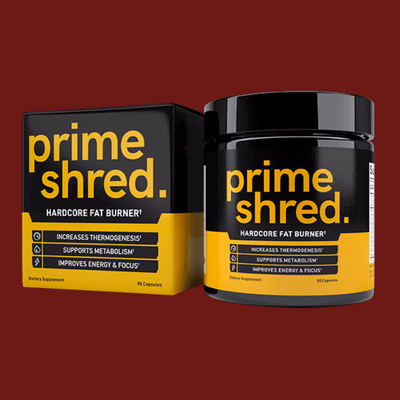
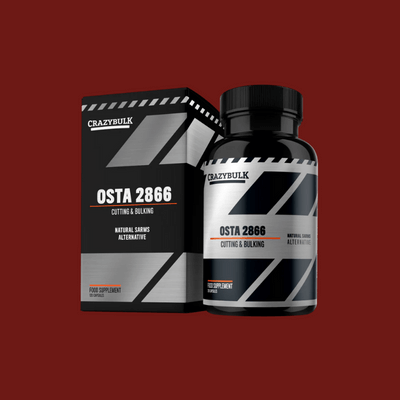
Great post, loved the way you explained!!
Thanks!
I like how you laid it out for all groups. Great read. Thanks man.
Glad you liked it! Thanks.
Well written with good numbers behind it. Clean cut and well defined!
Thanks
Thank you!
Hi Niklas,
I think you need to check your calculations on the bulking table.
165lbs BW at 10% body fat is 148.5lbs LBM. (165-10%= 148.5)
165lbs BW with a LBM of 150 is actually 9.1% BF. (165-9.1%=150)
167lbs BW with a LBM of 151 is 9.6% BF. (167-9.6%= 151)
I think I know where you may have gone wrong, you have done (150+10%=165) which is correct but this makes 165lbs 110% when it should only 100%.
It’s a bit tricky to explain but I am happy to help you do the sums again if you need. Let me know.
Josh
Hey Josh! I see now that you’re right! I will look into chagning the image for sure 🙂
Thanks!